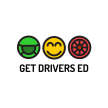Combat Distracted Driving With Get Drivers Ed
Steering Clear of Common Pitfalls: What is the Most Common Driving Mistake?

Driving is a complex task that requires full attention, sound judgment, and considerable skill. As many drivers both novice and experienced have learned, it's incredibly easy to make mistakes on the road. But what is the most common driving mistake, and how can it be avoided? At Get Drivers Ed, we've identified distraction as the leading cause of driving errors, and in this post, we'll delve into why it happens and how our courses can help prevent it.
The Pervasive Problem of Distracted Driving
Distracted driving surpasses all other driving mistakes as the leading contributor to road accidents globally. It's a widespread issue that affects drivers of all ages and experience levels. Distractions can come in many forms—texting, adjusting the radio, using navigation systems, or even talking to passengers—all of which divert a driver's attention from the road.
Why is Distracted Driving So Dangerous?
The main issue with distracted driving is that it compromises a driver's ability to observe, anticipate, and react to traffic conditions and road signs. The statistics are alarming: according to various safety reports, distracted driving is responsible for a significant proportion of traffic-related injuries and fatalities each year. At Get Drivers Ed, we emphasize understanding and mitigating the risks associated with distracted driving in all our courses, particularly in our flagship "Comprehensive Drivers Ed" program.
Types of Distractions
Distracted driving can be broken down into three main types:
Visual Distractions: Taking your eyes off the road, such as when reading a text message or looking at a GPS.
Manual Distractions: Taking your hands off the wheel, like eating or adjusting the stereo.
Cognitive Distractions: Taking your mind off driving, which can happen when you are lost in thought or having a conversation.
Each type of distraction can be dangerous on its own, but they often occur simultaneously, compounding the risk.
How Get Drivers Ed Tackles Distracted Driving
At Get Drivers Ed, we tackle distracted driving head-on with a multi-faceted approach:
1. Education on the Risks
Our courses include detailed discussions on the dangers of distracted driving, supported by real-life statistics and case studies to illustrate the potential consequences. By understanding the impact of their actions, students are more likely to adopt safer driving habits.
2. Developing Good Habits
We teach strategies for maintaining focus, such as:
Pre-setting Controls: Adjusting climate controls, mirrors, and entertainment systems before starting the drive.
Securing Devices: Keeping phones out of reach and using hands-free devices responsibly.
Minimizing In-Car Distractions: Reducing conversations with passengers and avoiding eating while driving.
3. Practical Training
Our driving instructors provide hands-on training to help students recognize and handle distractions. This includes exercises designed to improve multitasking abilities in a controlled environment, allowing students to experience the dangers of distraction in a safe setting.
4. Reinforcement Through Practice
Regular practice under the guidance of our instructors helps solidify these good habits. We also encourage students to reflect on their driving experiences and identify any lapses in attention.
Beyond Texting: Other Common Driving Mistakes
While distracted driving is a prime concern, it's not the only mistake drivers make. Here are a few other common errors:
1. Speeding

Exceeding speed limits or driving too fast for conditions is a prevalent issue. Speeding reduces the driver’s ability to react to sudden changes in the road environment and increases the severity of crashes.
2. Failure to Yield

Many accidents result from drivers not yielding the right-of-way, especially at intersections. This mistake can cause severe side-impact collisions.
3. Improper Lane Changes

Failing to check mirrors and blind spots or not signaling can lead to serious collisions. Proper lane change procedures are critical for maintaining safe traffic flow.
4. Following Too Closely

Tailgating reduces the time a driver has to react if the car in front suddenly stops. Maintaining a safe following distance is crucial for preventing rear-end collisions.
5. Ignoring Traffic Signs and Signals

Disregarding stop signs, yield signs, and traffic signals can lead to dangerous situations. Adhering to traffic controls helps prevent accidents and ensures smoother traffic flow.
Each of these mistakes is covered in our courses at Get Drivers Ed, where we provide comprehensive training to help students become safer, more attentive drivers. We use a combination of classroom instruction, interactive simulations, and practical driving experience to address these common pitfalls.
Conclusion
Understanding and avoiding common driving mistakes, particularly distracted driving, is crucial for anyone behind the wheel. At Get Drivers Ed, our goal is to equip you with the knowledge and skills to drive safely and confidently. Our comprehensive "Comprehensive Drivers Ed" program is designed to address the full spectrum of driving challenges, ensuring that you are well-prepared for any situation on the road.
Enroll in our "Comprehensive Drivers Ed" today and start your journey towards becoming a proficient driver. Don't let distraction be the reason you fail to reach your destination safely. Join us at Get Drivers Ed, and steer clear of common driving pitfalls. With our support and guidance, you can become a confident, competent, and conscientious drive
About the Creator
Get Drivers Ed
Discover expert tips, driving safety insights, and the latest trends from Get Drivers Ed. Your online guide to mastering the road. Learn, drive, and lead!






Comments
There are no comments for this story
Be the first to respond and start the conversation.